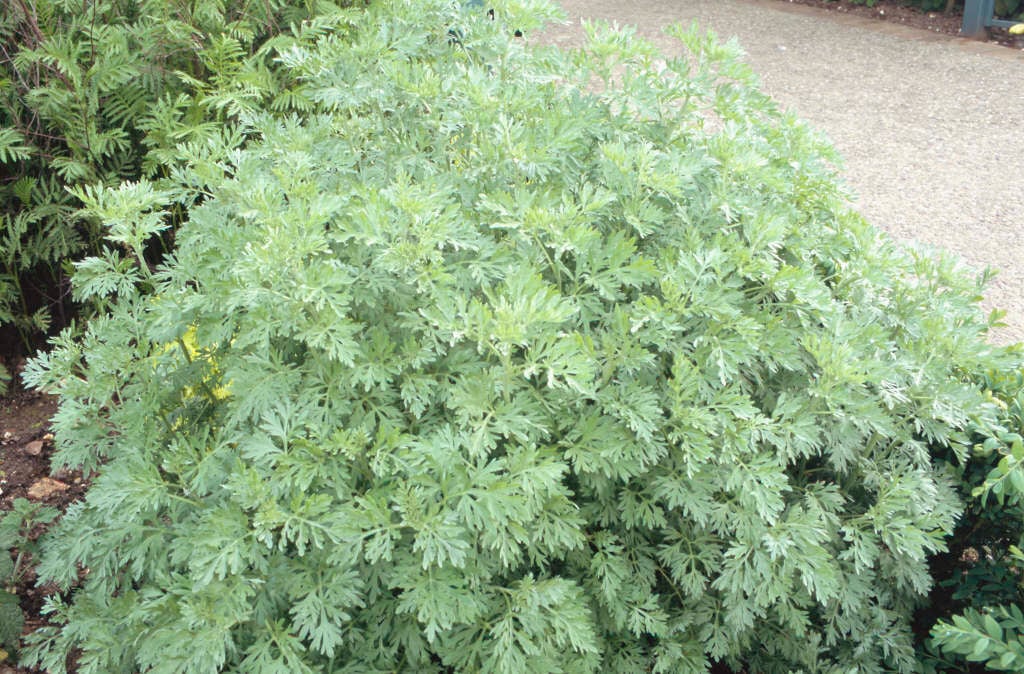Artemisia absinthium
wormwood
An upright deciduous perennial, with finely divided, highly aromatic grey-green foliage and rather insignificant yellowish flowers in late summer. Has many medicinal benefits and can also be made to create the potent alcoholic drink, absinthe
Other common names
absinthabsinthe
see morecommon wormwood
girdle of St John
green ginger
holy seed
lad's love
mingwort
old man
old woman
St John's girdle
warmot
wermod lwyd

Buy this plant
Size
Ultimate height
0.5–1 metresTime to ultimate height
2–5 yearsUltimate spread
0.1–0.5 metresGrowing conditions
Moisture
Well–drainedpH
Acid, Alkaline, NeutralColour & scent
| Stem | Flower | Foliage | Fruit | |
| Spring | Grey Silver | |||
|---|---|---|---|---|
| Summer | Yellow | Grey Silver | ||
| Autumn | Grey Silver | |||
| Winter |
Position
- Full sun
Aspect
South–facing or West–facing
Exposure
Sheltered Hardiness
H6Botanical details
- Family
- Asteraceae
- Native to GB / Ireland
- Yes
- Foliage
- Deciduous
- Habit
- Bushy
- Genus
Artemisia can be shrubs, perennials or annuals, evergreen or deciduous, with usually grey, aromatic, often divided foliage and rather insignificant flower-heads
- Name status
Correct
- Plant range
- Europe, Asia, N Africa
How to grow
Cultivation
Grow in fertile well-drained soil in sun. Can die back in heavy, poorly-drained soil
Propagation
Propagate by seed in containers in a cold frame in autumn or spring. Root stem tips or heeled sideshoots as greenwood cuttings in early summer.
Suggested planting locations and garden types
- Mediterranean climate plants
- Cottage and informal garden
- Flower borders and beds
- Wall side borders
Pruning
Pruning Group 7 Cut back to the lowest, new shoots near the base in mid to late spring
Pests
May be susceptible to aphids and a gall midge
Diseases
May be susceptible to honey fungus
Love gardening
Sign up to receive regular gardening tips, inspiration, offers and more
View our Privacy Policy
Get involved
The Royal Horticultural Society is the UK’s leading gardening charity. We aim to enrich everyone’s life through plants, and make the UK a greener and more beautiful place.